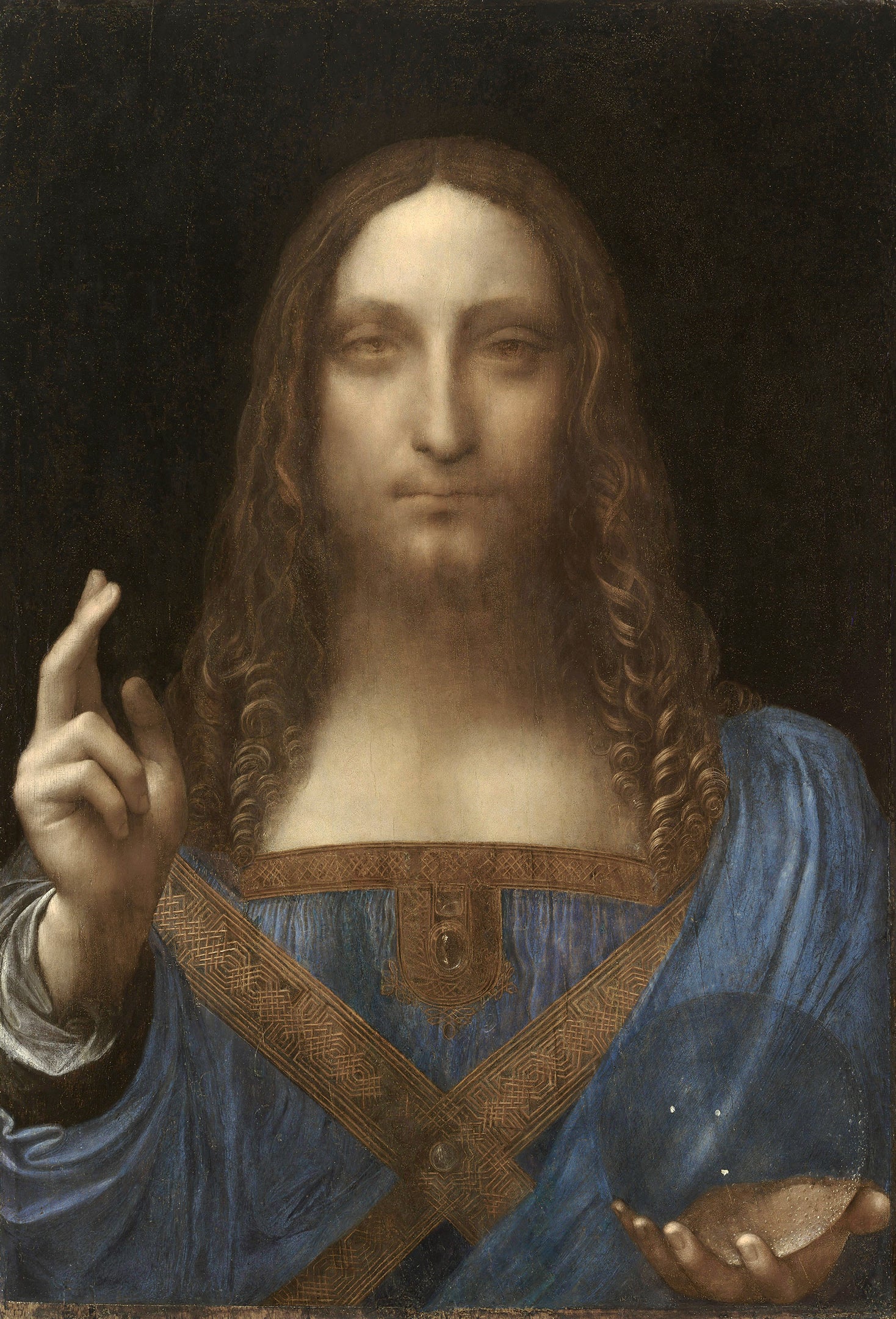
Salvator Mundi, Leonardo da Vinci
- Oil on linen canvas
- 100% hand-painted
- Painting reproduction
- Available for online purchase
- See quality
- Shipping
- Money-Back Guarantee
- Reviews
| Author: | Leonardo da Vinci |
|---|---|
| Type: | Painting |
| Style: | Renaissance |
| Medium | Oil |
| Support: | Walnut panel |
| Year: | 1499-1510 |
| Genre: | Retrato |
| Located: | Louvre Museum Abu Dhabi |
Pictorial Technique
Salvator Mundi masterfully reflects Leonardo da Vinci’s experimentation with sfumato, a device that allowed him to dissolve contours and model Christ’s face with imperceptible transitions between light and shadow, creating an almost ethereal sense of three-dimensionality. The choice of a walnut panel as support provided a firm, fine-grained surface, ideal for the precise application of oil layers. The painter applied successive glazes that give the skin a living, enigmatic transparency, while in the crystal orb he introduced a unique technical challenge: representing the purity of a translucent object at a time when optics was still in development.
The drapery of the garments combines chromatic richness with a detailed study of the fall of fabric under light, revealing not only his artistic interest but also his scientific drive to understand visual effects. The dark, neutral atmosphere surrounding the figure intensifies the volume and monumentality of Christ, isolating him in a timeless space and reinforcing the deep spirituality emanating from the work.
Symbolism in the Painting
Christ appears with his right hand raised, two fingers extended in a gesture of blessing. This gesture comes from Christian tradition and was widely recognized during the Renaissance. In this painting, the gesture is not decorative but defines the function of the image as a representation of Christ’s spiritual power over the world.
In his left hand, he holds a transparent orb, symbol of the earth and universal dominion. Representing a transparent object was a technical challenge at the time. Leonardo chose not to depict the refraction or visual distortion that a real sphere would cause, which has sparked debates among experts. For some, it was a deliberate simplification to focus attention on the religious meaning rather than the optical effect.
The Salvator Mundi, attributed to Leonardo da Vinci, depicts Christ as the redeemer of the world, an image of profound symbolic weight that merges the divine and the human. His right hand is raised in a gesture of blessing while his left holds a crystal orb. Christ’s gaze does not focus on an external point but seems to penetrate the viewer.
Choose options

Why is this painting famous?
The Salvator Mundi is renowned not only for its attribution to Leonardo — considered the most influential painter of the Renaissance — but also for its history of disappearances, restorations, and controversies. Rediscovered in 2005 after centuries in private collections and subjected to a complex restoration process, it was recognized by experts as an authentic work of the master, although debates still continue. In 2017 it gained worldwide fame when it was auctioned for $450.3 million at Christie’s, becoming the most expensive painting ever sold. This combination of iconographic mysticism, technical virtuosity, historical mystery, and economic record has made the Salvator Mundi one of the most discussed and fascinating paintings of our time.
Discover more famous paintings


